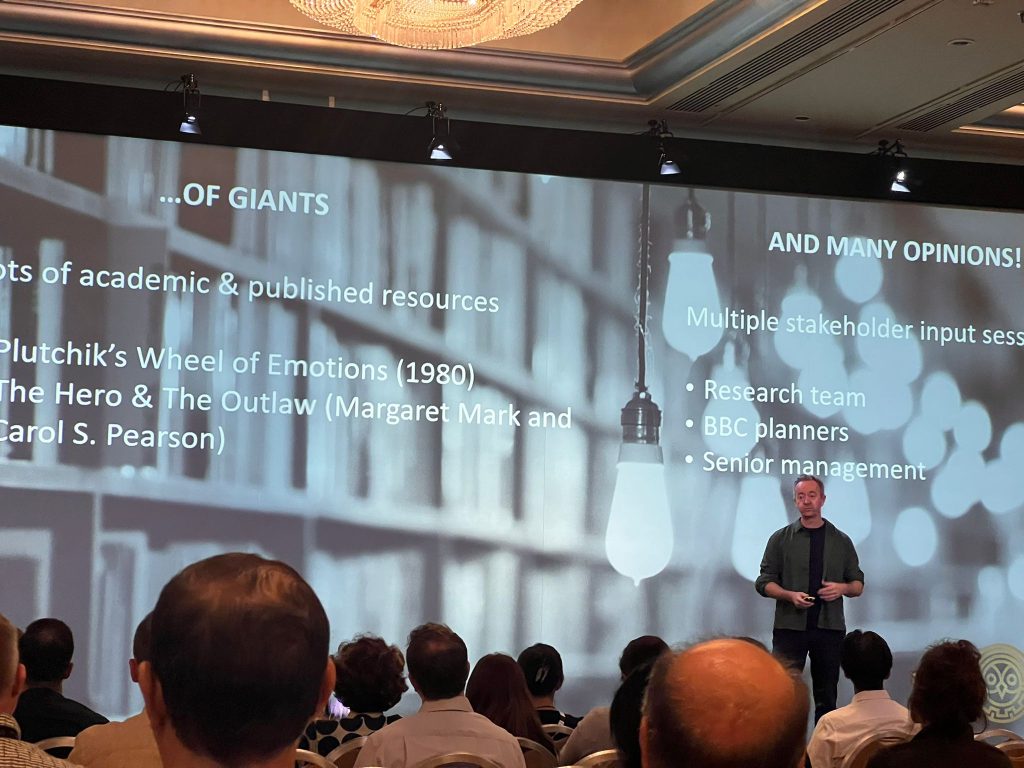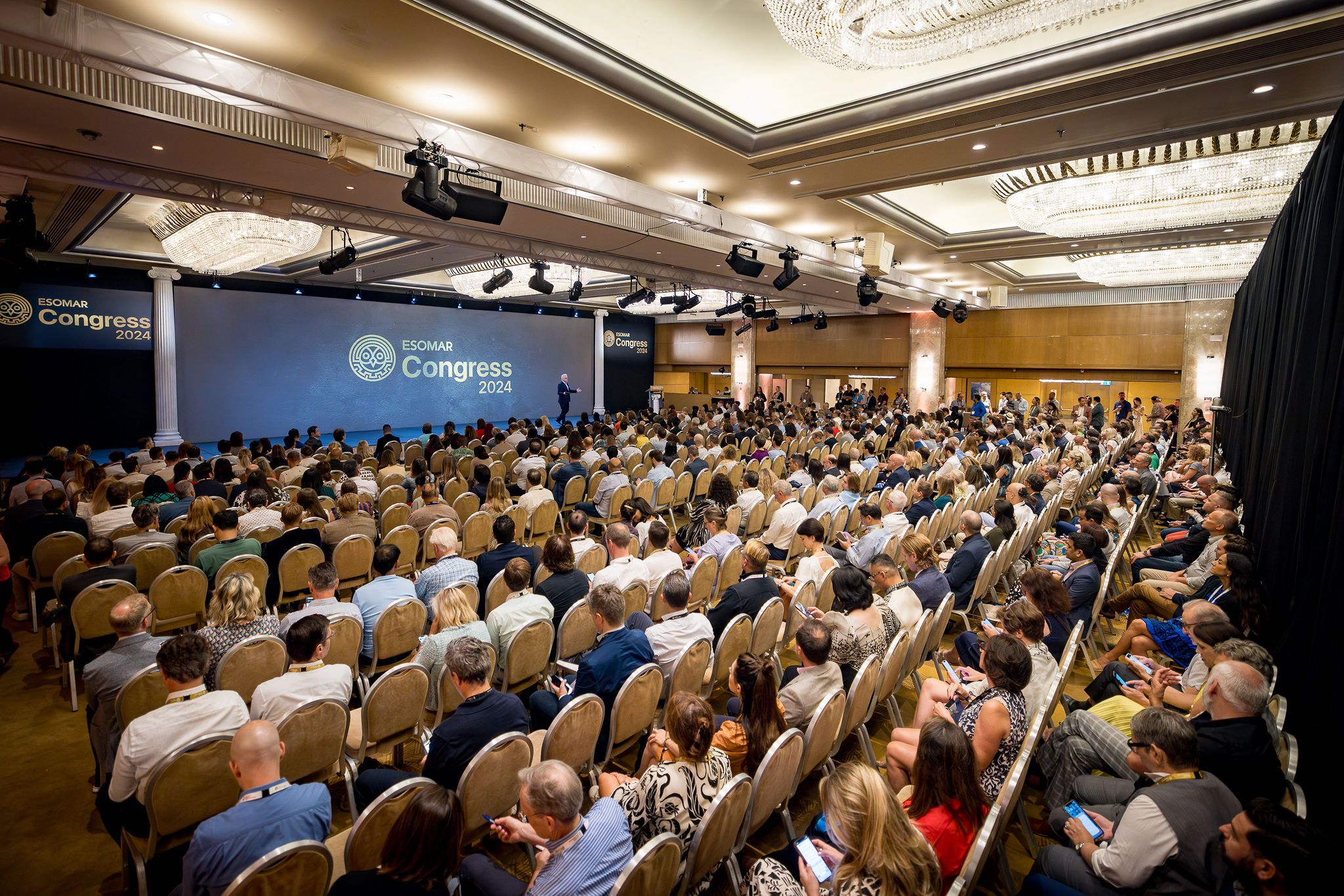Breaking out of the straightjacket imposed by traditional views of format, form and genre

Fresh off sharing the ESOMAR Conference 2024 stage with Kenny Cunniffe of the BBC, our joint MD Kevin Thompson summarises his paper:

This project stemmed from a realisation that the BBC needed something that could drive both its present and future. With so much to cover and so many demands on the study, we had to think creatively about what we were doing and how we would do it. Along the way we learnt a huge amount but we’ve tried to capture it in five thoughts:
1. Accept that something similar has been done before
Loads of great work has been done by your client, their competitors, your competitors and within your own organisation. Tapping into all that knowledge allows you to build on the best of what came before. But also look beyond your typical knowledge-base: Our main analysis lens, archetypes, underpins stories and thinking going way back in time. Finding, appreciating and then using the right framework needs you to look outside of your narrow sliver of knowledge.
2. Make the most of emerging technologies
We used AI to both prompt greater response (a technique that now underpins our Daisy tool, an AI-infused survey ‘moderator’) and analyse open ended data. AI allowed us to do this at speed during a phased pilot stage that got us into full fieldwork far more quickly than a traditional qualitative approach could have done for us.
3. Use maths creatively
Don’t just do a normal segmentation – well, not unless it’s really needed. You can do so much more if you come at things from different angles. Archetypal analysis is essentially the opposite of a segmentation, describing what pulls things apart rather than what makes them ‘typical’ of a group. This introduced flexibility and nuance that a normal segmentation just can’t provide.
4. Build complexity from simple building blocks
We can name our archetypal media needs intuitively and everyone can understand them immediately. However, they are myths, fairy tales and legends. They can blend, blur and combine in ways that completely alter the media formats chosen by people in these situations.
5. Stress test the output from the maths against the real world
If you can’t explain, it doesn’t matter if it’s “right”. We could follow the paths of specific media choices, looking at how our archetypal needs blended and combined, and then describe why people did what they did. It could have been complex but our intuitive archetypal needs, treated cleverly, produced beautifully simple stories in the end.
The BBC are using the work across UX, content and curation. It’s hopefully going to shape their future while improving their present, so our archetypal needs should live on across the organisation. And, selfishly, we learned a lot about media, people and ourselves along the way.


